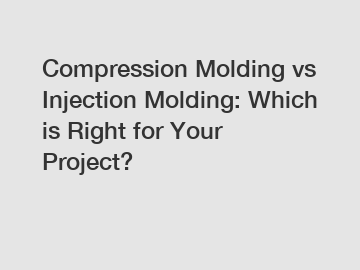The Ultimate Guide to T25 and T75 Flask Techniques
Cell culture is an indispensable technique used in various areas of scientific research, from drug discovery to regenerative medicine. Two commonly used cell culture vessels are the T25 flask and the T75 flask. Understanding the proper techniques for handling these flasks can significantly impact the success of your experiments and ensure optimal cell growth. In this comprehensive guide, we will delve into the key aspects of T25 and T75 flask techniques to help you master this fundamental skill.
Choosing the Right Flask:
Selecting the appropriate flask size for your specific cell culture needs is crucial. The T25 flask, also known as the 25 cm² flask, is best suited for smaller-scale experiments or when only a limited number of cells is required. On the other hand, the T75 flask, with a growth area of 75 cm², is ideal for larger-scale culture, increased cell proliferation, or when higher cell yields are necessary.

Sterilization and Preparation:
Before starting a cell culture, it is essential to maintain a sterile environment. Autoclaving or using a commercial sterilization method, such as gamma irradiation, ensures that your flasks are free from contaminants.
To prepare the flasks, follow these steps:
1. Place the required number of flasks in a laminar flow hood or biological safety cabinet.
2. Add an appropriate amount of culture medium to each flask. The volume should cover the entire surface area while leaving enough headspace for adequate gas exchange.
3. Place an autoclave tape or sterile foil over the flask cap as a visual indicator of sterilization.
4. Autoclave the flasks or use gamma irradiation according to the manufacturer's instructions.
5. Once sterilized, allow the flasks to cool down to room temperature before use.
Seeding Cells:
Seeding cells in the flasks correctly is crucial to achieve an optimal cell density for successful growth. Follow the steps below for proper seeding:
1. Calculate the desired cell density for your experiment. This will depend on the specific cell line and the goals of your study.
2. Carefully remove the sterilized cap from the flask and distribute the appropriate volume of cell suspension into the flask. Ensure an even distribution across the growth surface.
3. Gently swirl the flask in a circular motion to aid in uniform cell attachment.
4. Place the cap back on the flask and secure it tightly to prevent contamination.
5. Note the date and time of cell seeding for future reference.
Explore more:Best flask options for B2B purchase stage?
Are Small Food Packaging Pouches Destroying the Environment?
Best ice cream container packaging for purchase?
Discover the Ultimate Guide to 5ml Concentrate Jars: Answers to Your Top Questions
Ultimate Guide to Understanding Pharmaceutical Glass Types
Everything You Need to Know About Bopp Polypropylene Film
Mastering Cell Culture Plates: Tips and Tricks
Handling and Maintenance:
Once the cells have been seeded, it is crucial to provide them with the right conditions for optimal growth and maintenance. Follow these guidelines:
1. Use an incubator set to the appropriate conditions, including temperature, humidity, and CO2 concentration, to provide an environment favorable for cell growth.
2. Monitor cell growth regularly, documenting any changes in morphology, confluency, or viability.
3. Maintain an appropriate feeding schedule by replacing a portion of the culture medium with fresh medium at regular intervals. This helps replenish nutrients and remove accumulated waste products.
4. Avoid excessive handling of the flasks, as it can lead to physical stress on the cells.
5. Strictly adhere to aseptic techniques while handling flasks to prevent contamination.
Passaging Cells:
Passaging cells is the process of transferring them from one flask to multiple new flasks to maintain logarithmic cell growth and avoid overcrowding. Here's the general approach for passaging cells:
1. Aspirate the spent culture medium from the flask.
2. Rinse the cells gently with a pre-warmed, sterile buffer like phosphate-buffered saline (PBS).
3. Add a suitable enzymatic or non-enzymatic cell dissociation solution, depending on the cell type, to detach the cells from the flask surface.
4. Incubate the flask until the cells have fully detached.
5. Carefully pipette the cell suspension into a centrifuge tube, and spin it down to pellet the cells.
6. Aspirate the supernatant and resuspend the cells in a fresh culture medium.
7. Properly distribute the cell suspension into new flasks, following the steps outlined in the "Seeding Cells" section.
Conclusion:
Mastering the techniques of T25 and T75 flask handling is essential for successful cell culture experiments. By paying attention to sterilization, proper cell seeding, and maintenance, you can create an optimal environment for cell growth and proliferation. Remember to exercise aseptic techniques throughout the process, ensuring a contamination-free culture. With this ultimate guide, you are well-equipped to embark on your cell culture journey and unlock the potential of this remarkable technique in your scientific pursuits.
If you want to learn more, please visit our website flask sizes cell cultures, difference between t25 and t75 flask, t75 flasks dimensions.
Explore more:10 best Customized Flexible Packaging ideas for purchase stage?
Best square buckets with lids for purchase stage?
Ultimate Guide to 1 Ounce Jars: Everything You Need to Know
Top 10 reasons to choose glass tubular vials for your business?
Paperback vs Hardcover: Which is Better for Your Wallet and Shelf Space?
5 Unique Ways to Personalize Popcorn Bags for Every Occasion
Is PET permeability better than HDPE?










